Due to heavy rains in San Pedro del Arroyo we had to stop the excavation at the burial area for a while, so it was decided to open a second trench, this time with the East-West axis at the south end of the excavated area.
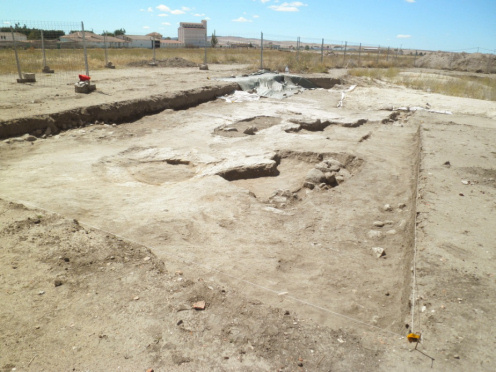
In this case it was observed that underneath the surface levels provided a horizontal surface basically composed of lime.
It appears to be a floor, because it’s occupying all the space bounded by two parallel walls that run, approximately oriented, East-West. On this floor there were several burials performed, as usual at the site, some of which significantly affect the low empire era structures. However, the floor shows how elements mentioned before fossilizes other elements, is the case of a large negative structure which seems to correspond to a silo, or pit, clogged with soil, ashes, and waste from the households (kitchen ware, storage, faunal bone remains...).
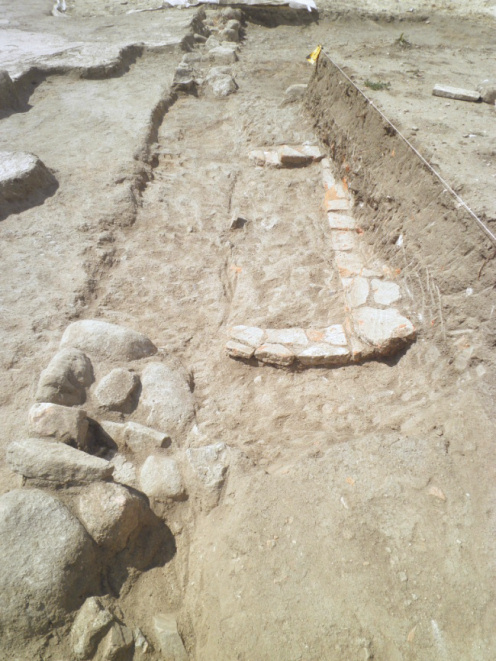 An image of some of the graves, in this case with low walls of brick, which are based on Late Empire living areas.
An image of some of the graves, in this case with low walls of brick, which are based on Late Empire living areas.
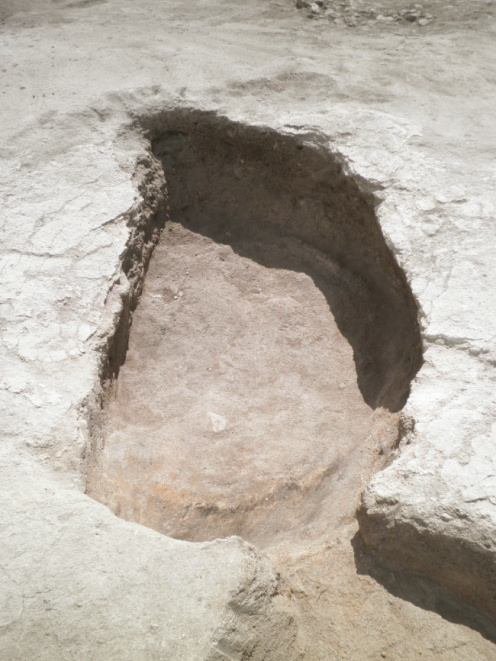 Photo of a silo / well sealed by the lime soil.
Photo of a silo / well sealed by the lime soil.
Translated by Lara M. Moreda
Edited by Andrew B. Greeves
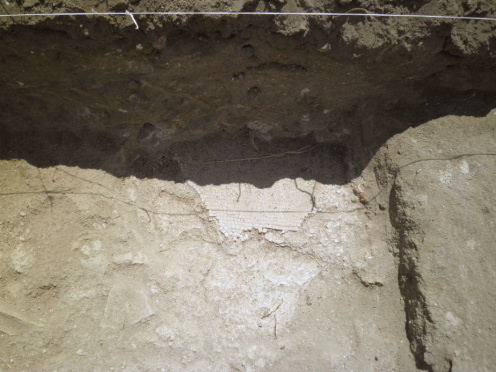 Detail of the tesserae found along the southern profile.
Detail of the tesserae found along the southern profile.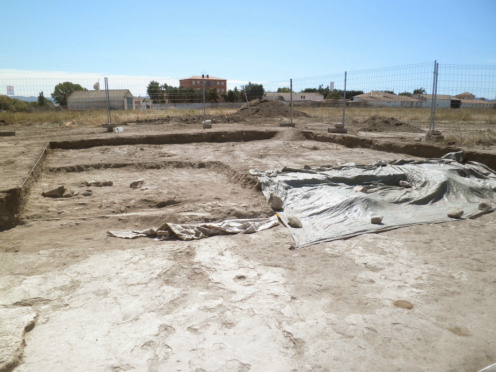 Enlargement of the trench to the south, following the provision of the new mosaic.
Enlargement of the trench to the south, following the provision of the new mosaic.




 An image of some of the graves, in this case with low walls of brick, which are based on Late Empire living areas.
An image of some of the graves, in this case with low walls of brick, which are based on Late Empire living areas. Photo of a silo / well sealed by the lime soil.
Photo of a silo / well sealed by the lime soil.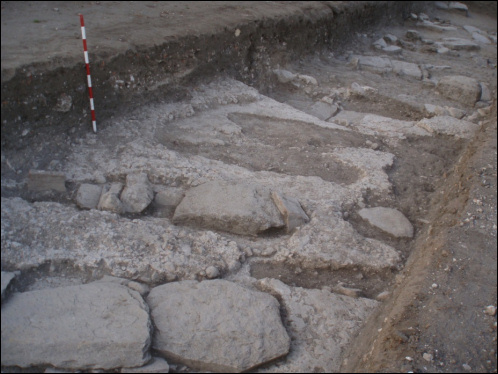 View of the excavated area in Trench 1. You can see the graves, some with a stone cover.
View of the excavated area in Trench 1. You can see the graves, some with a stone cover.
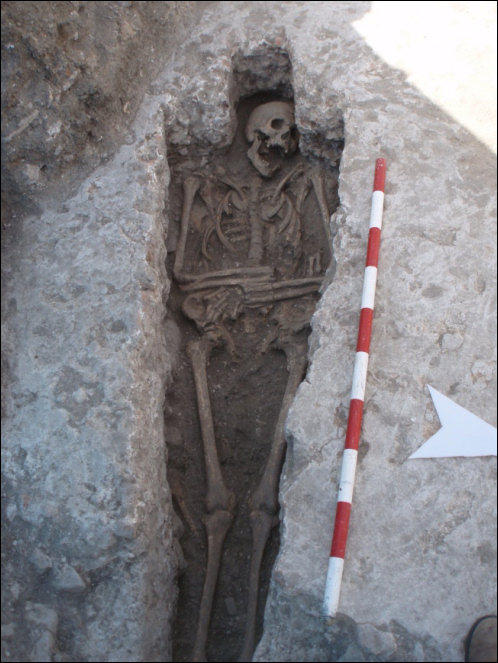 A photo of two burials in anthropomorphic tombs. Both in supine position but with a different position of the upper extremities.
A photo of two burials in anthropomorphic tombs. Both in supine position but with a different position of the upper extremities.